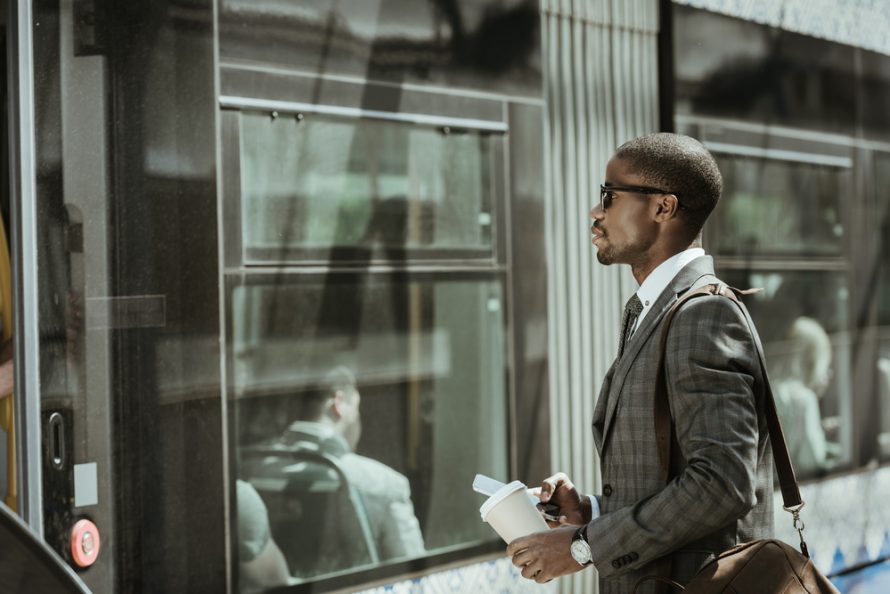When you travel daily, the last thing on your mind is the possibility of a fatal accident. Yet, even with strict safety standards, the reality is that these accidents are more common than we’d like to admit. For instance, train transportation accidents alone cause around 18,000 injuries and 1200 deaths in the United States each year.
Losing a loved one in a public transportation accident is a devastating experience, and seeking justice for them can feel like an uphill battle. These claims often stretch out for long periods, leaving families struggling financially during an already painful time.
Pre-settlement funding provides financial support to grieving families facing the emotional and financial hardships that arise after losing a loved one in accidents involving buses, subways, trams, or other forms of public transit. It provides quick financial help for things like medical bills, funeral costs, and everyday living expenses. A pre-settlement loan is not your typical loan—if your lawsuit doesn’t succeed, you don’t have to pay it back.
Common Causes of Fatal Public Transportation Accidents Due to Negligence
One major cause is poor vehicle maintenance. When buses or trains aren’t properly inspected or repaired, mechanical failures can occur, putting everyone at risk. Another critical factor is driver error. Fatigue, distractions, or substance abuse can seriously impair a driver’s ability to operate a vehicle safely.
Additionally, poorly maintained infrastructure, such as damaged tracks or inadequate signage, can contribute to these accidents. On top of that, when public transport employees aren’t adequately trained, it can result in mishandled emergency situations, putting passengers at even greater risk.
Who’s Responsible for Public Transit Fatalities?
The parties that can be held liable in a wrongful death lawsuit for a public transportation accident may include:
- The transportation company
- The driver or operator
- The manufacturer of the vehicle
- Government agencies
If you’ve lost a loved one because of negligence or safety lapses in public transportation, you deserve to hold those responsible accountable. Having an attorney on your side can make all the difference in fighting for justice for your family member. But even with legal support, waiting for a settlement isn’t easy, and you might find it hard to cover funeral costs, medical bills, and everyday expenses and daily living costs.
To ease the financial strain, you may turn to wrongful death pre-settlement loans from Baker Street Funding. We’re here to support you through every step of the legal process so that you have the resources necessary to seek accountability for your loss.
Pre-Settlement Funding for Public Transit Wrongful Death Lawsuits
Lawsuit loans, also known as pre-settlement funding, are risk-free cash advances for plaintiffs in personal injury cases, including wrongful death lawsuits involving public transportation. This type of funding is non-recourse, and based on the expected lawsuit settlement of your claim. If you lose the case, you aren’t required to repay the funds.
Pre-settlement funding helps families struggling with sudden loss bridge the financial gap while a wrongful death lawsuit is being resolved. It allows you to cover your daily expenses and financial obligations without having to settle for a lower compensation amount due to financial pressure.
To qualify, you need the following:
- Respected and Cooperative Attorney
- You Must Live in a Fundable State
- No History of Fraudulent Claims
Our pre-settlement loan criteria don’t look at credit or income as deciding factors.
How to Apply for Pre-Settlement Funding with Baker Street Legal Funding
To apply for a lawsuit loan with Baker Street Legal Funding, the process is straightforward and designed to ease the burden during a difficult time. Begin by filling out our online application form, which collects essential details about your case, including the nature of the wrongful death claim and the expected timeline for settlement. Our team will then review your application and consult with your attorney to evaluate the merits of your case.
Once approved, you can receive funds quickly—often within 24 hours. The amount available for funding will depend on the strength of your lawsuit, the anticipated settlement value, and your financial needs.
Reach out to Baker Street Funding today at (888) 711-3599, and allow us to support you in securing the financial peace you deserve.
What Makes a Wrongful Death Case from Public Transportation Strong Enough for Funding Approval?
In wrongful death cases involving public transportation, establishing negligence is critical for building a compelling case. Negligence, in this context, occurs when a service provider fails to exercise the appropriate level of care, resulting in fatal incidents.
So, how does this affect your legal funding approval? Your attorney must convincingly demonstrate to our underwriters that the service provider violated safety standards, directly leading to the accident and the subsequent loss of life.
Key Factors for Legal Funding Approval
For public transportation wrongful death cases, here are the factors needed to approve a funding application:
- Clear Negligence: Demonstrable evidence that the transportation provider (e.g., train, bus, subway operator) failed to comply with safety regulations or standards, and directly contributed to a tragic accident.
- Causation: Strong proof that negligence (e.g., missed inspections, improper maintenance, ignored safety protocols) was the actual cause of the wrongful death.
- Regulatory Violations: Documentation that Federal, state, or local transportation regulations breaches, such as FRA, DOT, FTA, or ADA standards, contributed to the fatality.
- Liability: Clear establishment of the service provider’s responsibility for the accident, backed by evidence like maintenance logs, inspection records, or eyewitness testimony.
- Damages: Thorough records of the monetary damages suffered, including potential income loss, funeral expenses, and psychological suffering, to determine the worth of the claim.
- Comparative Fault (if applicable): Consideration of whether the deceased’s actions played any role in the accident, which could influence the amount of funding approved.
Analyzing a Strong Case Example of a Fatal Bus Crash
The following fatal bus crash case is a profound example of what we believe is a strong wrongful death claim in public transportation due to the connections between employer negligence, regulatory non-compliance, and direct causation of fatalities.
- Documented Negligence. The driver involved had a documented history of drug use, including positive tests for marijuana and cocaine, which the employer knew about. The employer’s failure to take corrective actions such as suspension, retraining, or termination demonstrates a significant breach of the duty of care expected from transportation companies.
- Direct Causation. The concrete truck driver’s impairment due to drug use directly led to the catastrophic incident. He veered into oncoming traffic, colliding with a school bus and another vehicle. This direct cause-and-effect relationship substantiates the claim of fatal negligence, because the driver’s impairment was the definitive cause of the accident.
- Regulatory Violations. At the time of the accident, the driver was operating under a ‘prohibited’ status on his commercial driver’s license, a clear violation of federal transportation regulations. This non-compliance enhances the legal culpability and strengthens the wrongful death claim.
- Severe Impact and Damages. The crash resulted in multiple fatalities and injuries among the bus passengers, inflicting immense emotional and financial damages on the families. These consequences clearly demonstrate the severe impact of the negligence and support the substantial compensatory damages that the court may award.
- Employer Liability. The employer’s failure to properly supervise and evaluate the driver, especially given his drug history and prohibited license status, points to systemic issues within the company. This broader negligence by the company enhances the strength of the claim by implicating not just the actions of an individual but the policies of the organization.
Ready to Apply for a Lawsuit Loan?
Dealing with a wrongful death case, particularly when public transportation is involved, can be quite overwhelming in many respects. Not only does this tragedy rob them of a beloved person, but it also puts them in a tough spot financially, making an already difficult situation even harder to bear. But it’s important to know that you’re not alone in this process.
At Baker Street Legal Funding, we’re here to help you through these difficult times with a simple application process and a commitment to providing financial support when you need it most. Don’t let financial concerns add to your grief—let Baker Street Legal Funding provide the assistance you need. Call us at (888) 711-3599 or apply online to get started. Your peace of mind is just a step away.










